Length-carbon relation for four species of pelagic copepods from the Mexican Central Pacific
Submited: 2024-10-15 17:18:53 | Published: 2025-06-30 18:48:33
DOI: https://doi.org/10.3856/vol53-issue3-fulltext-3354
Abstract
The objective of this study is to generate length-carbon biomass predictive models corresponding to four dominant species of copepods (Subeucalanus subcrassus, Centropages furcatus, Eucalanus inermis, and Acartia tonsa) from the pelagic ecosystem of the Mexican Central Pacific. In general, the wet weight of the organisms of all the species analyzed increased with the increase in body size, although it is notable that for all species, this increase in wet weight did not occur linearly. The highest values of carbon content were observed in C. furcatus at intermediate-size intervals (1.06 and 1.15 mm). The carbon percentage to dry weight varied between 9.3 and 23.8% in this study. E. inermis and S. subcrassus showed the lowest and highest records, respectively. A. tonsa, a frequent and abundant species that links picoplankton to microzooplankton in the food web, showed, on average (12.2%), the lowest carbon-dry weight ratio of the analyzed species, ranging between 11.1 and 13.8%.



